Favorite line: “A CMS can help, but it isn’t governance.” Also: “Learning to use the CMS isn’t content training!”
— Kristina Halvorson (@halvorson) September 23, 2013
Any website managed by more than one person is going to have governance issues. Models vary — some are intentional and highly structured, while others are more “organic,” if you know what we mean. Not all are equally effective.
Any governance model is a compromise between these sometimes competing goals:
- Deliver a quality user experience
- Maintain consistent visual identity and messaging
- Distribute the work load
- Empower people to communicate when/where needed
- Ensure compliance with policies and guidelines (like EEOC or Accessibility)
- Establish technology infrastructure standards for security and sustainability
The less centralized your organization is, the more frequently these goals will be in conflict.
Nowhere is this more prevalent than in higher education, due to the decentralized structure of most colleges and universities. Academic freedom, vital to the functioning of a modern university, doesn’t always translate so well when individual units within an institution are directly responsible for communicating to a wide range of external audiences.
It wasn’t always like this. Before the web, most external communications in higher ed were handled by an office of communications, marketing or public relations. Individual departments might publish materials for internal use or update their catalog/prospectus descriptions, but the official voice of the institution was governed by a team whose job it was to ensure quality communication.
Fast forward 20 years, and websites have grown to hundreds of thousands of pages managed by hundreds if not thousands of contributors across a campus. No one in a central communications office wants to be responsible for all of that content. We’ve seen some smaller colleges that manage to handle it all, but most have distributed content responsibility to individual schools/faculties/centers/departments.
There’s no one right governance model for every institution. However, when we work with you to shape your governance strategy there are five principles that apply everywhere.
Everyone needs an editor
Every person who creates content for your website should have someone who reviews their work and helps to make it better. The best writers still need editors. Deans need editors. Directors need editors. A large institution needs someone in a central “managing editor” position who has authority to:
- Establish content strategy (minimal content requirements, recommended structure) for individual units within the institution
- Override unit-level content decisions if they are counter to the institution’s brand, content or experience goals. This requires political savvy, since it sometimes means challenging people in authority
The managing editor will have many other responsibilities, but without the authority to do these two things, this position will not be effective. Many organizations have a central web editor who only has authority over the centrally-managed parts of the website. They can recommend, cajole or nag other units within the institution, but usually they give up and focus on what they can control. We have never seen this result in a cohesive institutional web experience.
Ideally this managing editor should be part of a governance committee that establishes priorities, policies and guidelines for the institution’s overall web strategy. In a sense, this committee becomes the managing editor’s “editor.”
Some content really should be managed centrally, no matter how big your institution
There are some user goals that are too central to the mission of the institution and its success to be left to chance. You should make these priority decisions based on a prioritization of your audiences and an understanding of their top goals. For most colleges and universities this includes content that answers these questions:
- What can I study? (academic degree program landing pages)
- Why should I go to your college/university? (about us, etc.)
- What’s it like to live there? Will I fit in? (pictures of residence halls, campus, student life)
- How much does it cost? (tuition, financial aid, scholarship info)
- How do I get in?
If prospective students are one of your top audiences, your academic degree program landing pages (usually called “majors” or “courses”) should be the hardest-working pages on your website. We’re amazed at the number of institutions that leave these pages up to each academic department to manage with no apparent guidance or standards, or just use the dry content from the course catalog/prospectus.
A community of communicators is more important than policies
In a distributed governance model, most of your content editors will be the only person in his or her department responsible for web content, and web content will be just one of several other responsibilities. The unspoken message in this setting is that web content isn’t that important. Department-level communicators need to know how vital their work is to the institution’s overall mission, and to feel that they are part of a larger group of professionals on campus carrying out this mission. Whatever your governance policies, we highly recommend developing regular gatherings where web communicators can
- Meet each other, building a network of colleagues they can tap for help
- Learn from each other as well as outside experts
- See examples of great content across the institution
- Get better insight into what’s happening with user behavior and content usage across the institution’s websites
Content training is essential professional development
This goes with point three, but ongoing professional development for this community of communicators will help improve quality across the board. The content on your website should bear no resemblance to the long-form prose found in academic papers. Unfortunately, it often does. Your communicators need to be empowered to do it right. Many excellent webinars, books and other training opportunities are available at minimal cost. Also, learning to use the CMS is not content training!
A CMS can help, but it isn’t governance
Your desired governance model will have an impact on both your choice of a CMS and how you configure it. A CMS cannot, however, enforce your governance model on its own. Institutions that try to do this through complex workflows usually find departments coming up with creative ways to do an end-run around the constraints (like creating their own WordPress sites). A CMS can help you:
- Establish a consistent way to create semi-independent microsites
- Maintain consistent visual identity
- Require some level of editorial review
- Ensure that content is reviewed on a regular schedule, or expired when outdated
- Provide recommended structures for certain types of content
- Enable easier content re-use
When we have an opportunity to work with you to shape your governance model, we start by understanding the realities of:
- Who your audiences are and how important each is to your mission and goals
- How your institution is organized, and what sort of authority or oversight exists today
- Number of individual units within the institution and how they each rely on the web for communication
- How content is handled within most of these units
- What central web staff you have now, and what potential there is for restructuring in the future
- Who should be represented on a governance or steering committee
Based on this evaluation, we make recommendations for an operating model, often with a stepwise roadmap to move from the current model to the desired future model. We can also coach you on the best ways to introduce these changes and persuade people at various levels of your organization of the wisdom of your desired model.
But that’s a whole different post!

